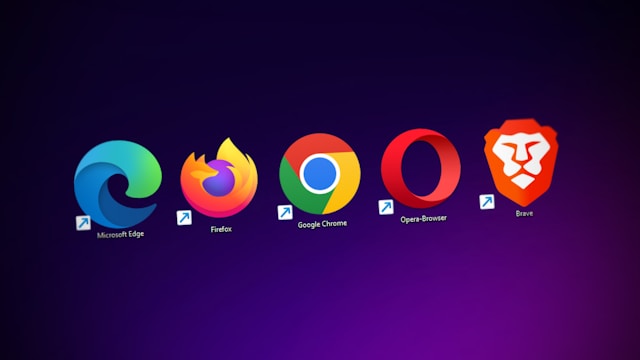The search engine landscape has split into two distinct worlds, and crypto projects sit right in the middle of this divide. While Google remains the giant with its massive user base, Brave Search has carved out a significant niche among privacy-conscious users and crypto enthusiasts. This creates a unique challenge: how do you optimise for both traditional web users and the Web3 community without compromising your message or diluting your efforts?
Most crypto websites focus entirely on Google’s algorithms, missing out on a crucial audience that actively seeks decentralised alternatives. Yet those who pivot completely to Web3-focused platforms often struggle to reach mainstream investors and users. The sweet spot lies in understanding how these two search ecosystems work differently and crafting a strategy that speaks to both audiences.
Table of Contents
ToggleBuilding Multi-Engine Visibility
Creating content that performs well across both platforms requires understanding their unique ranking factors. Google’s algorithm has become increasingly sophisticated at detecting thin or duplicate content, particularly in the crypto space, where scam sites proliferate. Quality signals matter more than ever, which means your technical analysis, project updates, and educational content need genuine depth.
For crypto marketing agencies specialising in SEO cryptocurrency strategies, this dual-platform challenge represents both an opportunity and a complexity. The most successful approaches involve creating content pillars that can be adapted for different search behaviours while maintaining consistent brand messaging across platforms.
Brave Search rewards sites that provide genuine utility to crypto users. This means your whitepaper should be easily accessible, your tokenomics clearly explained, and your roadmap regularly updated. Unlike Google, which might penalise keyword stuffing, Brave Search seems more tolerant of crypto-specific terminology when it serves the user’s intent.
Technical implementation also differs between platforms. Google’s Core Web Vitals heavily influence rankings, pushing crypto sites to optimise loading speeds and mobile responsiveness. Brave Search places less emphasis on these technical metrics but values sites that integrate well with Web3 functionality, such as wallet connections or blockchain explorers.
Understanding the Search Engine Split
Google processes over 14 billion searches daily, making it impossible to ignore for any serious crypto project. However, Brave Search has grown rapidly since its launch, particularly among users who value privacy and decentralisation. In January 2025, Brave has seen 1.3 billion organic search queries, which is close to double year-over-year.
Google users often approach crypto with curiosity but caution. They’re researching “what is Bitcoin” or “how to buy Ethereum safely.” Brave Search users tend to be more crypto-native, searching for specific DeFi protocols, token contract addresses, or detailed technical analysis. This audience split means your content strategy needs to serve both the crypto-curious and the crypto-committed.
The algorithms also prioritise different signals. While Google heavily weights domain authority and traditional SEO metrics, Brave Search places more emphasis on content freshness and user engagement patterns. This creates opportunities for newer crypto projects to compete more effectively on Brave, even without the established domain authority that Google favours.
Adapting Content for Web2 and Web3 Audiences
The language you use needs careful calibration. Web2 audiences require more explanation of basic concepts, clearer risk warnings, and accessible entry points. Your “What is DeFi” page should assume zero prior knowledge while still providing enough depth to satisfy more experienced readers.
On the other hand, Web3 audiences expect technical precision and insider knowledge. They want contract addresses, audit reports, and detailed tokenomics breakdowns. However, this doesn’t mean dumbing down content for Google and over-complicating it for Brave. The trick lies in layered information architecture.
Start with clear, simple explanations that work for newcomers, then provide expandable sections or linked resources for deeper technical details. This approach satisfies both search engines and serves users regardless of their crypto literacy level.
Technical SEO Considerations
Both search engines crawl and index crypto websites, but they handle certain elements differently. Google has become more aggressive about flagging crypto sites that don’t meet its quality guidelines, particularly around YMYL (Your Money or Your Life) content. This means your about page, team bios, and security practices need extra attention.
Brave Search appears more lenient with crypto-specific content but still values standard SEO practices like proper heading structure, meta descriptions, and internal linking. The key difference lies in how each platform interprets user signals and engagement metrics.
Site architecture becomes crucial when targeting both platforms. Your navigation should guide Google’s Web2 users through an educational journey while providing direct access points for Brave Search users who know exactly what they’re seeking. Consider implementing dynamic navigation that adapts based on user behaviour or referral sources.
Content Strategy for Dual Platform Success
Educational content performs exceptionally well across both platforms, but the presentation needs adjustment. Google users respond well to step-by-step guides, comparison articles, and beginner-friendly explainers, while Brave Search users prefer in-depth analysis, protocol comparisons, and real-time market insights.
The timing of content publication also matters differently. Google tends to favour consistent publishing schedules and evergreen content that maintains relevance over time. However, Brave Search users expect more immediate responses to market events, protocol updates, and regulatory changes.
Creating a content series works particularly well for this dual approach. A comprehensive guide to DeFi lending could be structured as multiple articles, with introductory pieces optimised for Google’s audience and advanced technical deep-dives targeting Brave Search users.

Measuring Success Across Platforms
Analytics becomes more complex when optimising for multiple search engines. Google Analytics and Search Console provide detailed insights for traditional search traffic, but Brave Search offers limited analytics integration. This means relying more heavily on direct traffic metrics, conversion tracking, and user behaviour analysis.
Success metrics need recalibration, too. High bounce rates that might concern you on Google could be perfectly normal for Brave Search users who know exactly what information they need. Conversely, longer session durations that look positive in Google Analytics might indicate confusion rather than engagement for crypto-native users.
The key lies in setting platform-specific goals. Google traffic might focus on education and conversion to email subscribers, but at the same time, Brave Search traffic could target direct community engagement or protocol interaction.











